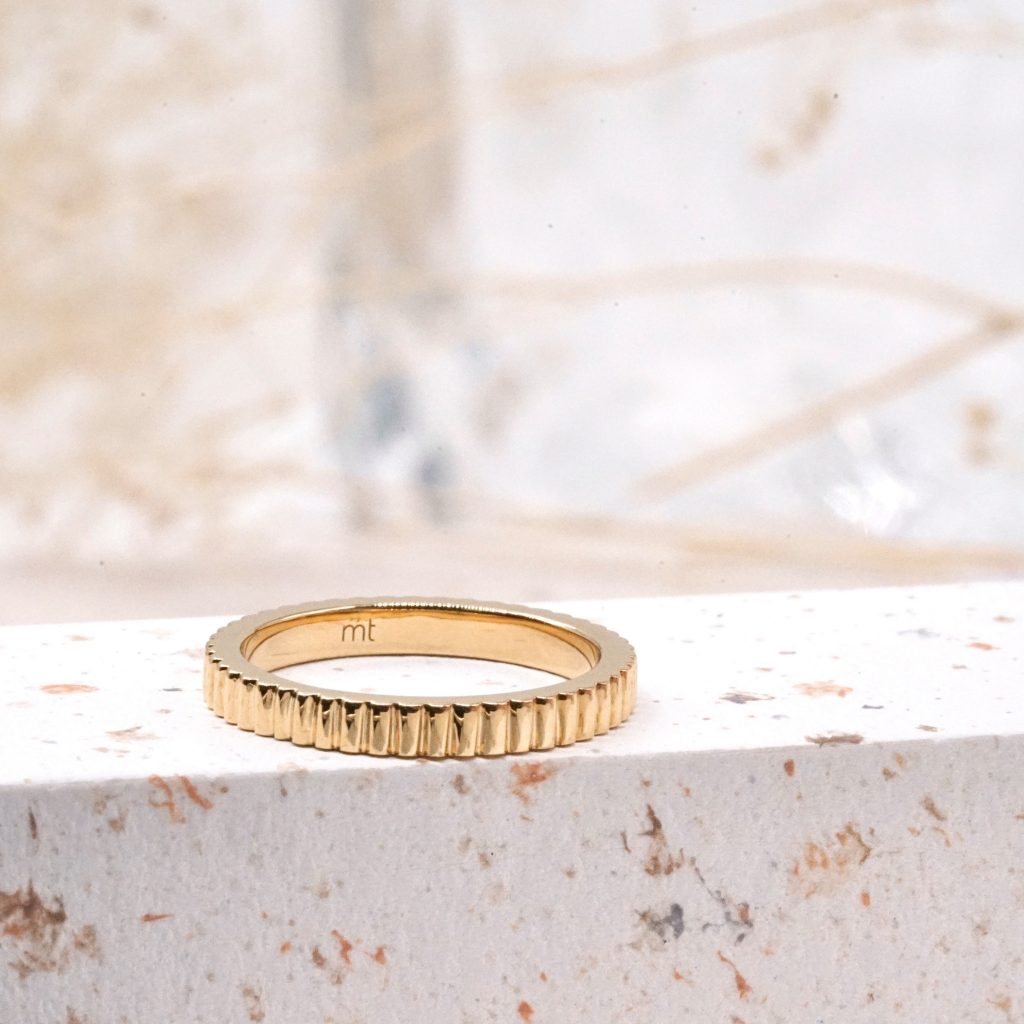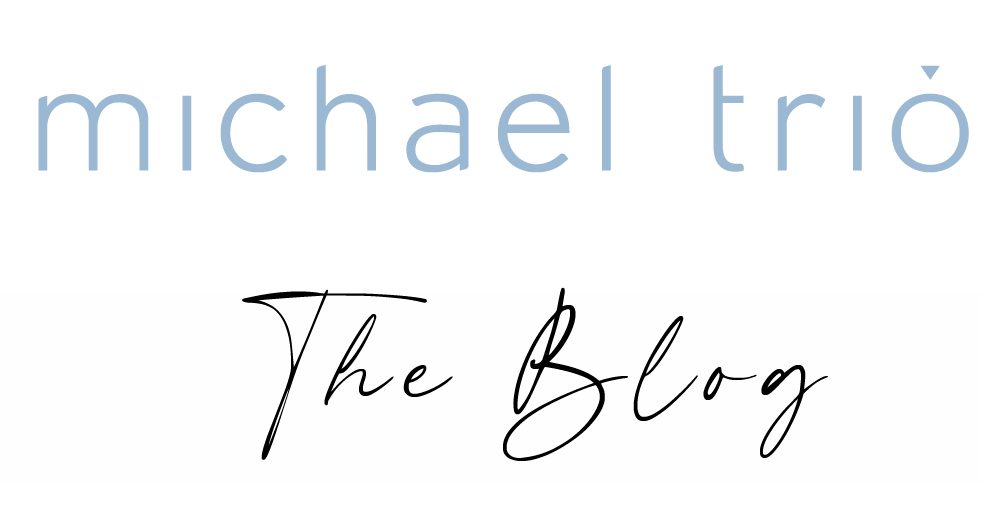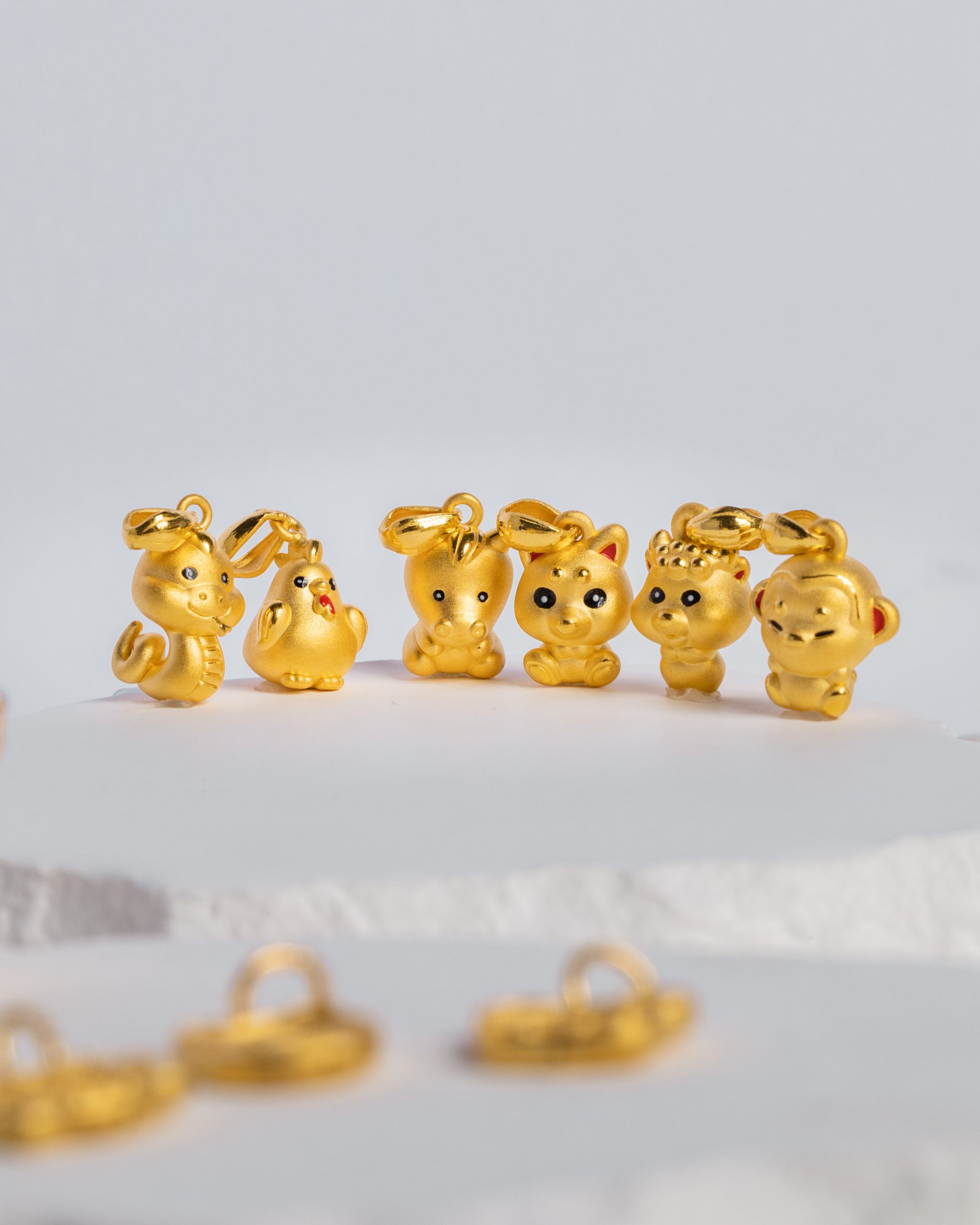For anyone familiar with jewellery, one of the most recognizable words used in the industry is “karat.” When you see or hear the word “karat,” you know they’re talking about gold right? Well, what’s the deal with karats, or what exactly does ‘karat’ mean? Now, you might wonder, does more karats mean better quality, or is it the other way around?
First, let’s delve into the meaning of “karat.”
The Meaning of Karat
Karat, or K, is a unit of measurement for the purity of gold. It is expressed as a fraction of 24, where 24K is pure gold. This means that 18K gold is 75% gold, 14K gold is 58.3% gold, and 10K gold is 41.7% gold.
Gold is a very soft metal, so it is alloyed with other metals, such as copper and silver, to make it more durable and workable. The higher the karat of gold, the softer it is, but also the purer it is.
The karat measurement of gold jewellery matters because of its influence on the piece’s quality, value, and appearance. The colour of gold can also change according to its karat rating–higher karat gold has a deeper, richer colour, making it more valuable in jewellery.
It’s also important to note that “carat” and “karat” aren’t necessarily the same thing. While “carat” can be used to refer to either diamond or to gold, “karat” refers exclusively to gold. This means diamonds can have a “carat” rating, but not a “karat” rating.
Gold Purity and Karats
In jewellery, karats have a direct relationship with the purity of gold using the 24-part proportion mentioned above. The most common karat ratings in gold jewellery are 24 karat, 22 karat, 18 karat, and 14 karat. However, more uncommon karat ratings also exist, particularly in custom jewellery.
In general, durability goes up as gold purity or karat goes down. The trade off, however, is that lower karat gold may have a paler appearance, whereas higher karat gold would be richer and more vivid.
Gold jewellery is typically available in 10K, 14K, 18K, and 24K. The most popular karat for gold jewellery is 14K, as it is a good balance of hardness, durability, and affordability.
Here is a table of the different karatages and their purity:
| Karat | Gold (purity) | Alloy Metals | Fineness |
| 24K | 100% | None | 999.9 |
| 22K | 91.67% | 8.33% (usually copper) | 916.7 |
| 18K | 75% | 25% (usually copper) | 750 |
| 14K | 58.33% | 41.67% (usually copper) | 583.3 |
| 10K | 41.67% | 58.33% (usually copper) | 416.7 |
Different karatages of gold jewellery:
Let’s break down the most common karatages of gold jewellery for you.
24 karat (24k)
24k gold is the highest possible karat rating, representing 24 out of 24 parts. 24k gold normally has the richest, most vivid shade of gold, but there’s always a tradeoff. Due to the absence of alloys, 24k gold is easily scratched and lacks the durability of lower karat gold. This is great to use for special occasions, because jewellery made from 24k gold would not be subjected to the wear and tear of daily use.
You might also hear 24k being referred to as 999 gold–this is a gold purity rating system known as the millesimal fineness system. 999 gold is read as “three nines fine gold.”
22 karat (22k)
Though not quite as pure as 24k gold, 22k is a good mix of purity and durability, making it a great choice for jewellery intended for daily use, such as rings, bracelets, and necklaces. However, it is still pure enough to be used for ceremonial purposes, such as for weddings or for other special occasions.
In the millesimal fineness system, 22k gold can also be referred to as 916 gold.
18 karat (18k)
In exchange for a paler shade, 18k gold is even more durable than 22k gold. It is also more affordable and cost-effective due to the lower gold content, making it a great choice on a budget while still getting good value out of your money.
14 karat (14k)
14 karat gold is a very popular choice, owing to the excellent balance of affordability, durability, and gold purity at this karat rating. 14k gold is highly durable, and won’t nick or scratch easily even with heavy daily use.
This karat rating is also ideal for jewellery intended to carry substantial weight, such as large earrings or chunky bracelets, since the risk of deformation is very low.
Which karat of gold is right for you?
The best karat of gold for you depends on your personal preferences and lifestyle. If you are looking for a durable piece of jewellery that will last for many years, then 10K or 14K gold is a good option. If you are looking for a more delicate and luxurious piece of jewellery, then 18K gold is a good choice.
Another important consideration is sensitivity. Sometimes the alloys in gold jewellery, such as nickel, can cause allergic reactions in some people. In cases such as this, 18K and 22K gold are ideal choices. Because of the much lower alloy content, these are considered to be hypoallergenic.

How to tell the karat of gold jewellery

Most gold jewellery will have a karat stamp on it. This stamp will indicate the purity of the gold. For example, a piece of 14K gold jewellery will have a stamp that says “14K or 585“, or “22K or 916“
If you are unsure of the karat of a piece of gold jewellery, you can take it to a jeweller or appraiser to have it tested.
Where Can I Find Gold Jewellery?
At Michael Trio, we offer a diverse range of stunning jewellery options, spanning from exquisite 24K gold to elegant platinum metals, perfect for your engagement ring, wedding band, or any other jewellery desires you may have. We also have our 999 pure gold collection as a treasure trove, featuring a wide array of items, from pendants and chains to coins and bars, all radiating pure elegance.
Each and every piece within the Michael Trio selection is meticulously crafted, designed to cater to a multitude of styles and aesthetics. Whether your heart yearns for a timeless engagement ring to propose to your beloved, a gold coin to commemorate a special moment, or a gold bar for investment purposes, you’ll discover a world of options awaiting you at Michael Trio.

